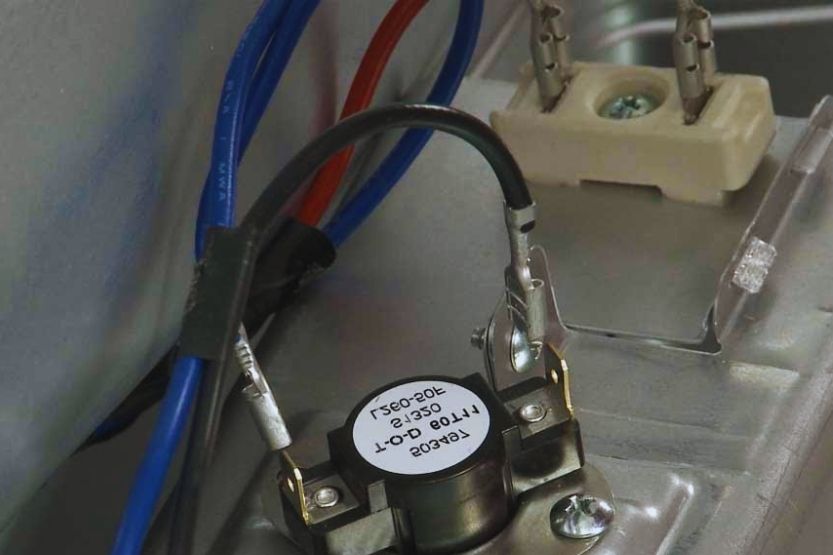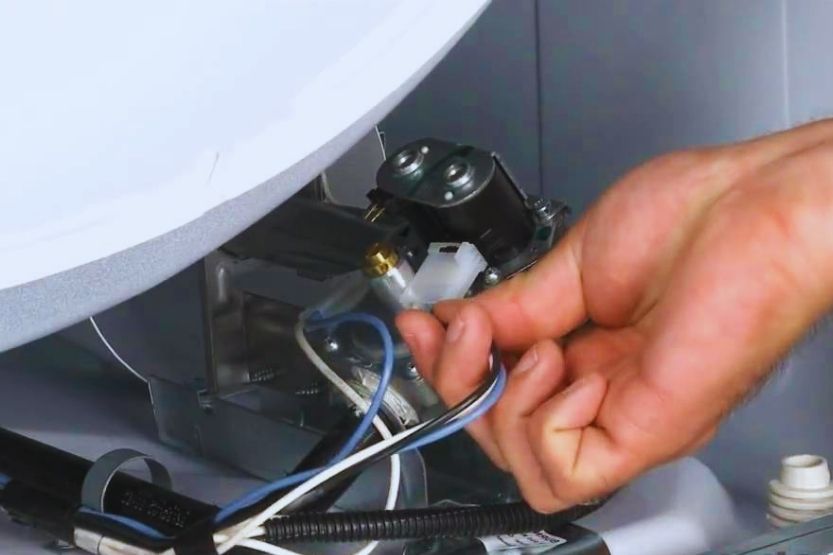Back in the day, people had to leave their wet clothes out in the sun all day to dry them off. But thanks to that miracle of modern technology called the electric dryer. We can now dry our clothes faster and more efficiently — that is until it breaks down. So, when you’re left with a mess of wet clothes, what do you do about an electric dryer, not heating?
The dryer vent is probably clogged if your electric dryer is not heating. In which case, you will only need to clean it. But it can also be due to a defective part. To fix this, you will need to determine which part of your dryer is defective and have it replaced.
Read on to know more about why your electric dryer will not heat.
Electric Dryer Not Heating

If your electric dryer does not heat, it can be because of a clogged dryer vent. In which case, you will only have to clean it. But it can also be due to a defective part. To fix this, you will need to determine which part of your dryer is defective and have it replaced.
Clean or Unclog Your Electric Dryer First
It could be possible that your electric dryer stopped heating because of a blocked or clogged air vent line. Before taking your dryer apart, clean out its air venting system first.
Use a Lint Cleaning Tool
Using a lint cleaning tool or a canister vacuum, eliminate all of the lint from the back of your dryer, the vent line, the lint screen, and the wall. Check the exterior area where hot air is vented, and make sure to clean it and remove any blockage.
Repair the Dryer if It Is Still Not Working
If you find a large amount of lint, this could have been the cause of your electric dryer, not heating. If your dryer works fine afterward, then the problem is solved. But if not, move on to repairing your dryer.
Dryer Not Heating? How to Fix Clothes Dryer
How to Test and Fix an Electric Dryer
Here are the materials you need and the step-by-step instructions for testing and fixing an electric dryer:
Materials
- Screwdriver
- Nut Driver
- Pliers
- Multimeter
- Safety Gloves
Steps on How You Can Test and Fix an Electric Dryer
- Remove Power from the Dryer
- Remove the Dryer’s Panel
- Use a Multimeter
- Buy a Replacement Part
1. Remove Power from the Dryer
Unplug the electric dryer or flip the wall breaker to remove power from the dryer.
2. Remove the Dryer’s Panel
To access the parts inside the dryer, remove the back panel if you use an older style dryer. If you’re using a newer style, you might have to remove the front panel instead.
3. Use a Multimeter
Use a multimeter to locate which part of the dryer prevents it from heating.
4. Buy a Replacement Part
Once you have determined the defective part, buy a replacement part and install it yourself.
More on Testing the Parts of an Electric Dryer
Let’s focus more on testing the parts of an electric dryer based on the following:
- Heating Element
- Cycling Thermostat
- High Limit Thermostat
- Igniter
- Radiant Flame Sensor
- Gas Control Valve
- Coils
- Temperature Sensor
- Timer
- Thermal Fuse
1. Heating Element
Responsible for Generating Heat
The heating element is responsible for generating the heat in an electric dryer. It is a coil of heating wire contained in a metal chamber. The flowing electric current creates heat. This is then absorbed by the air being pulled through the chamber. If the heating element is defective, it will not generate heat.
Disconnect the Dryer from Power Source
The first step is disconnecting your electric heater from the power source and finding the heating element. Then, remove the element from the dryer and examine it for any signs of damage or burning.
Use a Multimeter
Set the multimeter to its Rx1 setting and test for continuity by touching the probes to the element terminals. If you get a reading of infinity, you will need to get a replacement heating element.
2. Cycling Thermostat

Controls the Temperature With the Dryer Drum
The cycling thermostat controls the temperature within the dryer drum. It is designed to cycle the heating element on and off to maintain the right amount of heat. The cycling thermostat is usually found either on the blower housing or somewhere in the internal airflow ducting. The cycling duct tends to become faulty over time.
The first thing to do is to disconnect the electric dryer from the power source. Then, open the dryer cabinet and look for the cycling thermostat. It is usually located either on the bower housing or somewhere in the internal airflow ducting.
Use Pliers to Pull the Metal Connectors
Use pliers to pull gently on the metal connectors and avoid the wires. Then, remove the cycling thermostat. With the multimeter set to Rx1, touch the probes to the cycling thermostat’s terminals to test for continuity. If you do not receive a reading of zero or infinity, your cycling thermostat will need to be replaced.
3. High Limit Thermostat
Prevents Electric Dryer from Overheating
Mounted on the heating chamber, the high limit thermostat prevents the electric dryer from overheating when the exhaust vent gets restricted. A restricted exhaust vent causes the high limit thermostat to activate or trip.
This interrupts the circuit to the heating element or the gas control valve. Unlike a cycling thermostat, the high limit thermostat is not designed to activate repeatedly, eventually failing and causing the dryer not to heat.
Locate the High Limit Thermostat
The first steps are to unplug the electric dryer, open its cabinet, and look for the high limit thermostat. It can be located somewhere in the air pathway exiting the dryer drum, inside the exhaust system, or on the blower wheel housing.
Carefully remove the high limit thermostat from the electric dryer. Test it with the multimeter set to Rx1, touch the probes to each terminal to check for continuity. If you do not receive either zero or infinity reading, you will need to replace your high limit thermostat.
4. Igniter
Ignites the Gas Released by the Gas Control Valve
Found in newer gas dryers, the igniter or glow bar ignites the gas released by the gas control valve. When the dryer calls for heat, the igniter starts to glow while it heats up. Once the maximum temperature is achieved, the gas control valve opens, igniting the gas.
Disconnect the Dryer from the Power and Gas Source
Disconnect the dryer from both the power source and the gas source. After the dryer’s cabinet is opened, locate the igniter beside the gas valve burner tube. Depending on the model, the igniter will be either coil-shaped or flat.
Remove the igniter very carefully to test it. Igniters are extremely fragile and must be handled with care.
Test Using a Multimeter
Set the multimeter to its lowest setting for resistance and touch the probes to the igniter’s terminals to test for continuity. If you get a 50-400 ohms reading, the igniter has continuity. If you receive any other reading, your igniter must be replaced.
Again, electric dryer, not heating – what are the causes? Common reasons why an electric dryer is not heating include a clogged vent, no gas flow, a tripped circuit breaker, a damaged thermal fuse, and a faulty heating element.
5. Radiant Flame Sensor
Sense Heat from the Igniter or the Burner Flame
The function of the radiant flame sensor is to sense heat coming from either the igniter or the burner flame in a gas dryer. It detects the heat emanating from the igniter to open the gas control valve. It also detects the heat from the burner flame to keep the gas valve open.
If the radiant flame sensor becomes faulty, the igniter will not glow, or the gas valve will not open. If the igniter doesn’t glow, you will need to test the sensor for continuity using a multimeter.
The igniter may continue to glow, but the gas control valve doesn’t open to light a flame. This could mean that the electrical contacts within the sensor are stuck closed, and the sensor will have to be replaced.
Unplug the Dryer and the Gas Hose
Ensure that the dryer is unplugged and the gas hose disconnected before testing the dryer. Once done, open the dryer’s cabinet to find the radiant flame sensor, which is located next to the igniter.
Remove the radiant flame sensor carefully from the dryer for testing. Set the multimeter to Rx1 and touch the probes to the sensor’s terminals. If the test doesn’t produce a zero reading, you will need a replacement radiant flame sensor.
6. Gas Control Valve

Power Comes from the Radiant Flame Sensor and Igniter Circuit
The gas control valve is vital for a gas dryer’s gas burner system. It derives power from the radiant flame sensor and the igniter circuit. Once the circuit is completed, the coils are energized. Also, the gas control valve opens to release gas into the burner, where it will ignite.
Sign of a Defective Gas Valve
If an igniter glows but shuts off without producing a flame, it’s a sign that your gas valve is defective. While the valve may still function normally at the start of the drying cycle, it can fail in the middle of it. This results in insufficient heat to properly dry clothes.
Once you have disconnected the gas dryer from the power source and gas hose, remove the dryer’s lower panel to access the gas control valve. Then, remove the coils from the gas valve.
Set the multimeter to Rx1 and touch the probes to the coils’ terminals to test for continuity. If you get a reading of 1000-2000 ohms, your coils are fine. But if you don’t, you may need to replace your gas control valve.
7. Coils
Operate the Gas Control Valve
Modern gas dryers are equipped with electric coils which operate the gas control valve. Situated on top of the gas control valve, they are controlled by the heating circuit.
If one or more coils aren’t working properly, the gas control valve will not open, and the dryer will produce no heat. Even if the coils function correctly when the drying cycle begins, they may eventually fail as they heat up internally.
The first step is to disconnect the gas hose and unplug the dryer. Then, remove the lower access panel to find the gas control valve.
Remove the Coils from the Gas Valve
Remove the coils from the gas valve. With the multimeter set to Rx1, touch the probes to the terminals of the coils to test for continuity. If the test does not produce a 1000-2000 ohms reading, you will need replacement coils.
8. Temperature Sensor
Changes Resistance Depending on Temperature
The temperature sensor is responsible for changing the resistance depending on the temperature. Cycling thermostats manage the internal temperature on most gas and electric dryers.
Some Dryers Have Multiple Sensors
But on some electronic-controlled dryers, the internal temperature is managed by temperature sensors. Depending on the type of dryer, the temperature could be regulated by multiple sensors.
Access the Temperature Sensor for Testing
Again, the first step is to unplug the dryer from the power source. Open the dryer’s cabinet to access the temperature sensor, which can be located along the airflow path to the drum.
Remove the temperature sensor carefully. Let it rest until it cools to room temperature before testing the resistance.
Set a multimeter to Rx1 and touch the probes to the temperature sensor’s terminals. If you receive a zero reading, your temperature sensor is not defective. But if you receive any other reading, you will need to replace the sensor.
9. Timer
The timer is located in the dryer’s control console. It has a small motor connected to a series of gears rotating cams that turn electric contacts on and off within the timer.
Damaged Timer Can Prevent Dryer from Producing Heat
The timer’s electric contacts control the dryer motor and the heating circuit. A defect in them can prevent the dryer from producing heat.
Once you have unplugged the dryer, remove the control console so that you can find the timer. You will already be able to remove certain models during this stage, but you may also have to remove the rear panel on other models.
After the timer has been removed from the dryer, set a multimeter on Rx1 and touch the probes on the terminals of the timer to test for continuity. If you receive any other reading than 2000-3000 ohms, your timer needs to be replaced.
10. Thermal Fuse
Prevents Dryer from Overheating
The function of the thermal fuse is to stop the dryer from overheating. If the thermal fuse of a dryer is blown, it will no longer be used and will have to be replaced.
Locate the Thermal Fuse
After disconnecting the dryer from the power source, remove the back access panel to locate the thermal fuse. The thermal fuses are usually located on the heating element and the blower housing. Remove the fuse from the dryer for testing.
With a multimeter set on Rx1, touch the probes on the thermal fuse terminals to test for continuity. If you receive anything other than a zero or infinity reading, there is no continuity, and a replacement thermal fuse needs to be installed.
Conclusion – Electric Dryer Not Heating [Causes and How to Fix]
If your electric dryer does not heat, it can be because of a clogged dryer vent. In which case, you will only have to clean it. But it can also be due to a defective part. To fix this, you will need to determine which part of your dryer is defective and have it replaced.
The next time your electric dryer stops heating, do not panic. At best, all it needs is a bit of cleaning for it to start producing heat again. But when worst comes to worst, it’s only a simple matter of diagnosing the problem, taking out the defective part, and replacing it with a new one. Then, your dryer should be as good as new.
Read next:
Does Hot Water Shrink Clothes? Washing Clothes in Hot vs Cold Water




